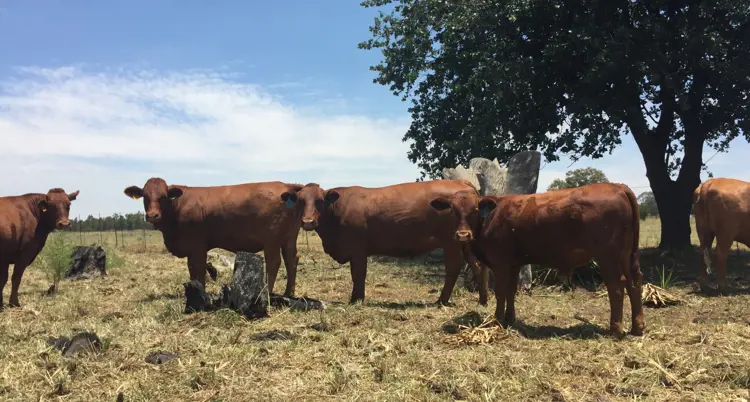Winter maintenance: your trump card in the dry season
In any extensive ruminant system, the main feed component, crude fibre, comes in the form of natural grazing. The optimal utilization of this source of roughage can be utilized with good management and the purposeful implementation of a good quality winter lick programme. If used properly, it ensures that natural grazing is used as optimally as possible.

The timing of the implementation of winter licks is vital in order to improve and maintain the health and condition of your breeding animals. This is especially important after the challenging season of 2017/2018 and the current state of most of the country's natural pasture.
During the summer and early winter months, pasture is the largest source of available protein and energy for ruminants. When grazing begins to mature, the fibre content increases, while the protein content begins to decrease. Together we see a decrease in digestibility of the pasture and the consequent contribution of nutrients to the animal. If it is not managed properly it will lead to a decrease in the condition and weight of animals that correlates directly with fertility and conception during the mating season.
We can improve the situation by managing the rumen microbes, which leads to an increase in the digestibility of low-quality roughage and the consequent increase in available nutrients. The situation further improves as the rumen microbes themselves serve as a source of protein and energy for ruminants in the form of microbial protein. This effect is even observed on good quality grazing. The effective functioning of rumen bacteria is indispensable in ruminants.
This is where the inclusion of a good quality lick supplement plays an important role. The general misconception regarding winter licks, especially, is that the primary focus is to replenish shortages in nature. Although it is partially correct, the emphasis should rather be shifted to optimal management of the rumen microbes, which in turn naturally overcomes the deficiencies. In this way, we ensure a healthy functional rumen that optimizes the grazing at your disposal, and create a nutritional source for the animals - rather than trying to supplement shortages with unnecessary expensive feed. Between 60% and 90% of an animal's protein needs can be provided by microbial protein - if managed correctly.
When the compilation of a supplement can bring about the correct ratio of nutrient sources to microbes, as well as its gradual release (utilization) over time, it results in a faster increase in rumen microbes, which leads to better utilization of roughage, more microbial protein, better animal health, increased reproduction, etc. under the same conditions.
The De Heus RumiLick® Bovine 50 (V28649) is an ideal winter lick for severe Suurveld winter grazing that is based precisely on this principle. RumiLick® Bovine 50 is a low intake protein trace mineral supplement for cattle with 50% protein, 89% from NPN (Urea and other sources). Supplementing with RumiLick® Bovine 50 should commence as a rule of thumb as early as early March (when the protein content of grazing drops below 6%) with expected intake of 200 g – 300 g per animal per day.
A good indication of when to start with winter licks is when the pasture begins to seed. After a dry year, followed by good rains, it may also be necessary to start earlier. Supplementation is then gradually adjusted as the quality of the pasture begins to decrease towards the peak of the winter season to 400 g – 500 g intake per animal per day. It is of the utmost importance that roughage is available with the use of winter licks. Just before calving time and at the height of the winter season, change to RumiLick® Production (V24935) - a production lick, containing more natural protein and energy. It supports udder development, foetus growth and milk production. By now, the animal's nutritional needs are at their highest while the quality of natural grazing is the poorest.
Lick intake is also a good indication of dry matter quality and availability. The poorer the roughage or availability of it, the higher the lick intake in ruminants. Use this as management information to decide when moving animals to fresh pasture camps. Do not add salt to the lick. Although the intake will be relatively low at the beginning of the dry season, you will enable the animals to adjust to their environment and microbes early enough to function optimally as soon as the grazing quality begins to decrease. Especially in a year like this year where rainfall and grazing are insufficient, the timing of the utilization of a winter lick is extremely important.
